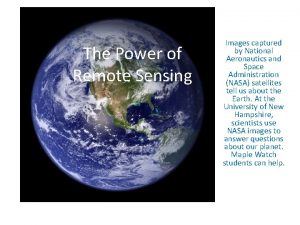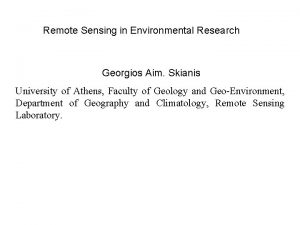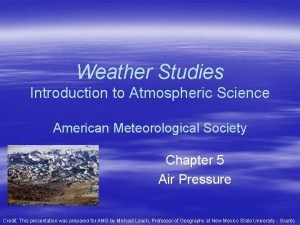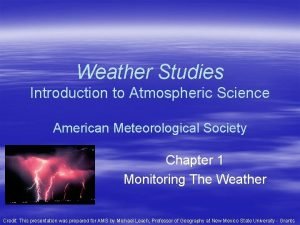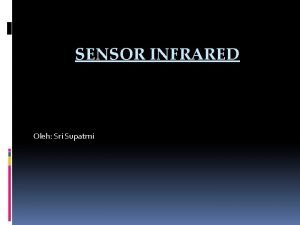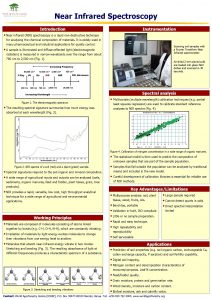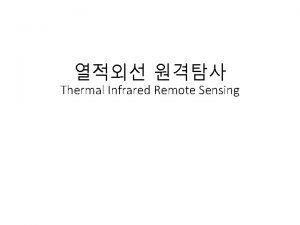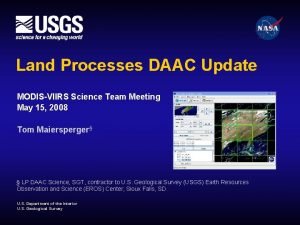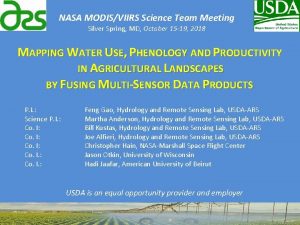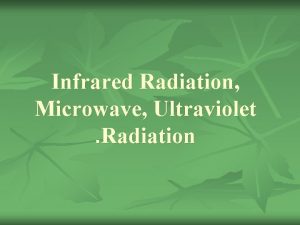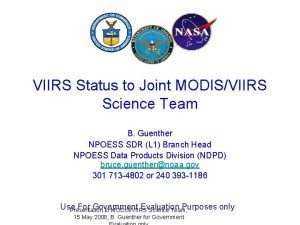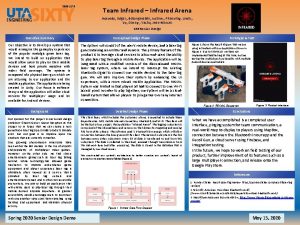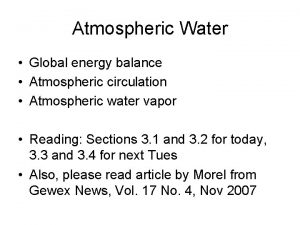2020 MODISVIIRS Atmospheric Science Team Meeting Thermal Infrared

![TIR Remote Sensing of Volcanic Plumes Detect plumes through transmission [τ(λ)]: the attenuation of TIR Remote Sensing of Volcanic Plumes Detect plumes through transmission [τ(λ)]: the attenuation of](https://slidetodoc.com/presentation_image_h2/8afac66452d93896ed5702cd20eb16c0/image-2.jpg)













- Slides: 15

2020 MODIS/VIIRS Atmospheric Science Team Meeting Thermal Infrared (TIR) Remote Sensing of Volcanic Plumes with MODIS and VIIRS Vincent J. Realmuto Jet Propulsion Laboratory, California Institute of Technology 16 November 2020 © 2020, California Institute of Technology. Government sponsorship acknowledged.
![TIR Remote Sensing of Volcanic Plumes Detect plumes through transmission τλ the attenuation of TIR Remote Sensing of Volcanic Plumes Detect plumes through transmission [τ(λ)]: the attenuation of](https://slidetodoc.com/presentation_image_h2/8afac66452d93896ed5702cd20eb16c0/image-2.jpg)
TIR Remote Sensing of Volcanic Plumes Detect plumes through transmission [τ(λ)]: the attenuation of surface radiance [ε(λ) · B(λ, To )] passing through the plume enroute to the sensor L(λ, To ) = {ε(λ) B(λ, To ) + [1 - ε(λ)] D(λ)} τ(λ) + U(λ) The observed radiance [L(λ, To ); outlined arrow] includes the surface radiance (red arrow), reflected downwelling sky radiance [D(λ), yellow arrow], and upwelling path radiance [U(λ), blue arrow] Reconstruct Observed Radiance: 1) Transmission, sky radiance, and path radiance are estimated through radiative transfer (RT) modeling, cached, and re-used 2) Surface emissivity [ε(λ)] available from lab spectra, product archives, or calculated within scene 3) Surface temperature [To] estimated from radiance observations

RT-Based Plume Detection and Mapping: Bardarbunga Volcano (Iceland) 2014 -09 -05 a) Surface temperature estimation does not consider volcanic plumes or met. clouds b) Misfit map shows the locations of plumes (red oval) and met clouds c) Met clouds are identified by comparing surface temperature estimates with air temperature at surface d) Combination of cloud mask and misfit map improves the detection of volcanic plumes e) Estimation of SO 2 column density is confined to the locations identified by the masked misfit map f) SO 2 map is filtered/repaired to minimize the “holes” corresponding to the locations of met clouds.

Calibration/Validation: Bardarbunga Example (a) VNPP 03: 15 UTC (b) MODIS 03: 25 UTC 2014 -09 -05 03: 15/03: 25 UTC (Night-time) 2014 -09 -05 13: 06 UTC (Daytime) SO 2 retrievals based on (a) VNPP and (b) MODIS-Aqua observations are virtually identical OMPS (UV) and VIIRS (TIR) Collocated on S-NPP and NOAA-20 Platforms Validates the use of VNPP data to augment and extend MODIS-based data records Contemporaneous Retrievals of Total SO 2 Mass from SNPP are in Excellent Agreement (149. 5 vs. 150 kt)

Calibration/Validation: Mt. Etna Example Five Daytime Observations Within Period of ~120 min (average of 36 min between observations) Validate data products through comparison with field measurements and complimentary satellite data products (including SEVIRI, IASI, and TROPOMI) provided by Italian National Institute of Geophysics and Volcanology (INGV) 5

RGB Plume Detection Strategy Problem: Plume Detection Requires RT-Based Temperature Estimation Solution: “Rapid” Plume Detection Based on Spectral Properties and Brightness Temperature Confine RT-Based Temperature and SO 2 Estimates to Plumes

Plume Spectroscopy: Sarychev Peak Volcano a) MODIS-Terra True-color composite. Volcanic plumes and meteorological clouds have similar appearance at visible wavelengths b) False-color composite of TIR data from Channels 32, 31, and 29, displayed in red, green, and blue. SO 2 plumes appear yellow, while the display colors of ash plumes range between red and magenta c) Transmission spectra of SO 2 (middle) and silicate ash (bottom), superimposed on the spectral response of MODIS Channels 29, 30, 31, and 32

RGB Plume Detection Strategy: De-Correlation Stretch (D-Stretch) D-Stretch based on PCA – Results Depend on Scene Statistics Used to Calculate PC (a) True-Color Composite; (b) TIR D-Stretch based on Global Scene Statistics (c) D-Stretch based on Statistics for User-Defined Sub-scene (d) D-Stretch Minima based on Quadrant Statistics

VIIRS RGB Plume Products: Raikoki Volcano | 2019 -06 -22 | 1430 UTC Aggregate D-Stretch Composite Cloud-Masked D-Stretch Composite 9

VIIRS RGB Plume Detection Raikoki Eruption | 2019 -06 -22 | 1430 UTC 10

VIIRS RGB Plume Detection Bardarbunga Eruption | 2014 -09 -05 | 0454 UTC 11

VIIRS RGB Plume Detection Mt. Etna Eruption | 2018 -12 -28 | 1148 UTC 12

MODIS RGB Plume Detection Sierra Negra Eruption | 2005 -10 -26 | 1940 UTC 13

Resources for TIR Plume Detection and Mapping L 1 B Data Products Additional Data Products Radiance-at-Sensor Satellite Zenith/Range Atmospheric Profiles Emissivity Spectra DEM Latitude Longitude Additional Resources Radiative Transfer Model Access to L 2/L 3 Data Access to External Data Servers Recursive Processing

Thanks for Your Attention!
 Thermal infrared
Thermal infrared Ers-1
Ers-1 Penn state meteo
Penn state meteo Weather studies introduction to atmospheric science
Weather studies introduction to atmospheric science Weather studies introduction to atmospheric science
Weather studies introduction to atmospheric science Section 3 using thermal energy answers
Section 3 using thermal energy answers Thermal transfer vs direct thermal printing
Thermal transfer vs direct thermal printing What are your favorite subjects
What are your favorite subjects For todays meeting
For todays meeting Proposal kickoff meeting agenda
Proposal kickoff meeting agenda What is meeting and types of meeting
What is meeting and types of meeting What is meeting and types of meeting
What is meeting and types of meeting Infrared vs bluetooth
Infrared vs bluetooth Infrared vs bluetooth
Infrared vs bluetooth Pengertian infrared
Pengertian infrared Near infrared spectroscopy instrumentation
Near infrared spectroscopy instrumentation
